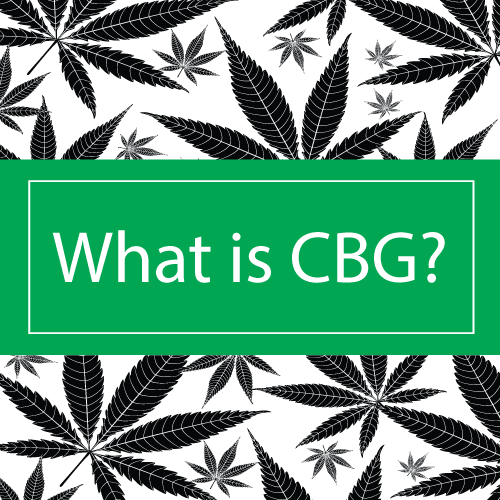Menu
Your cart is empty
Looks like you haven't added anything to your cart yet
What Is CBG?

Currently, we know of at least 113 cannabinoids present in cannabis. Cannabinoids are stored in those sparkly crystals (trichomes) that beautifully blanket the cannabis flowers in addition to being located in the leaves and stems in smaller amounts.
With so much media these days covering stories about marijuana and hemp, most people by now are familiar with THC (tetrahydrocannabinol) and CBD (cannabidiol) along with their effects. People are really starting to become familiar with the fact that many of these cannabinoids have similar effects to the THC and CBD cannabinoids. One of these cannabinoids, particularly CBG (cannabigerol), while not present in large quantities in most strains, is blazing a trail of its own in the world of hemp and worth learning about for several reasons.
What Is CBG Oil Good For?
Cannabigerol, or CBG, is a non-psychoactive cannabinoid typically most abundant in low-THC and high-CBD cannabis strains such as the hemp plant. Like THC, CBG reacts with the cannabinoid receptors in the brain. CBG, however, acts as a buffer to the psychoactivity of THC by working to alleviate the paranoia, sometimes caused by higher levels of THC.
CBG works to fight inflammation, pain, nausea, and slow the proliferation of cancer cells. Research has shown it also significantly reduces intraocular eye pressure caused by glaucoma. High CBG flower strains, CBG oils, and CBG edibles can be beneficial in treating these conditions.
Does CBG Get you High?
When first introduced to this wonderful cannabinoid, the most common question is, “ Does CBG get you high”? Cannabis plants that are grown and sometimes genetically engineered to contain high THC contents will provide a low level of CBG, which means that THC-rich plants do not produce a lot of CBG. Cannabis plants rich in CBG are those that have high CBD content; these are mostly hemp plants. As you already know, strains rich in CBD do not give you the feeling of high
With that said, CBG will not give you the feeling of being high since it came from CBD-rich strains and not from THC-rich strains.
Conclusion
Research about this cannabinoid type is still ongoing, but scientists are already excited about what this cannabinoid could do. A lot of individuals can benefit from its medical-related usage.
References:
- leafly
- Cresco Labs
- Journal of Cannabinoid Medicine
- Choosing a selection results in a full page refresh.







